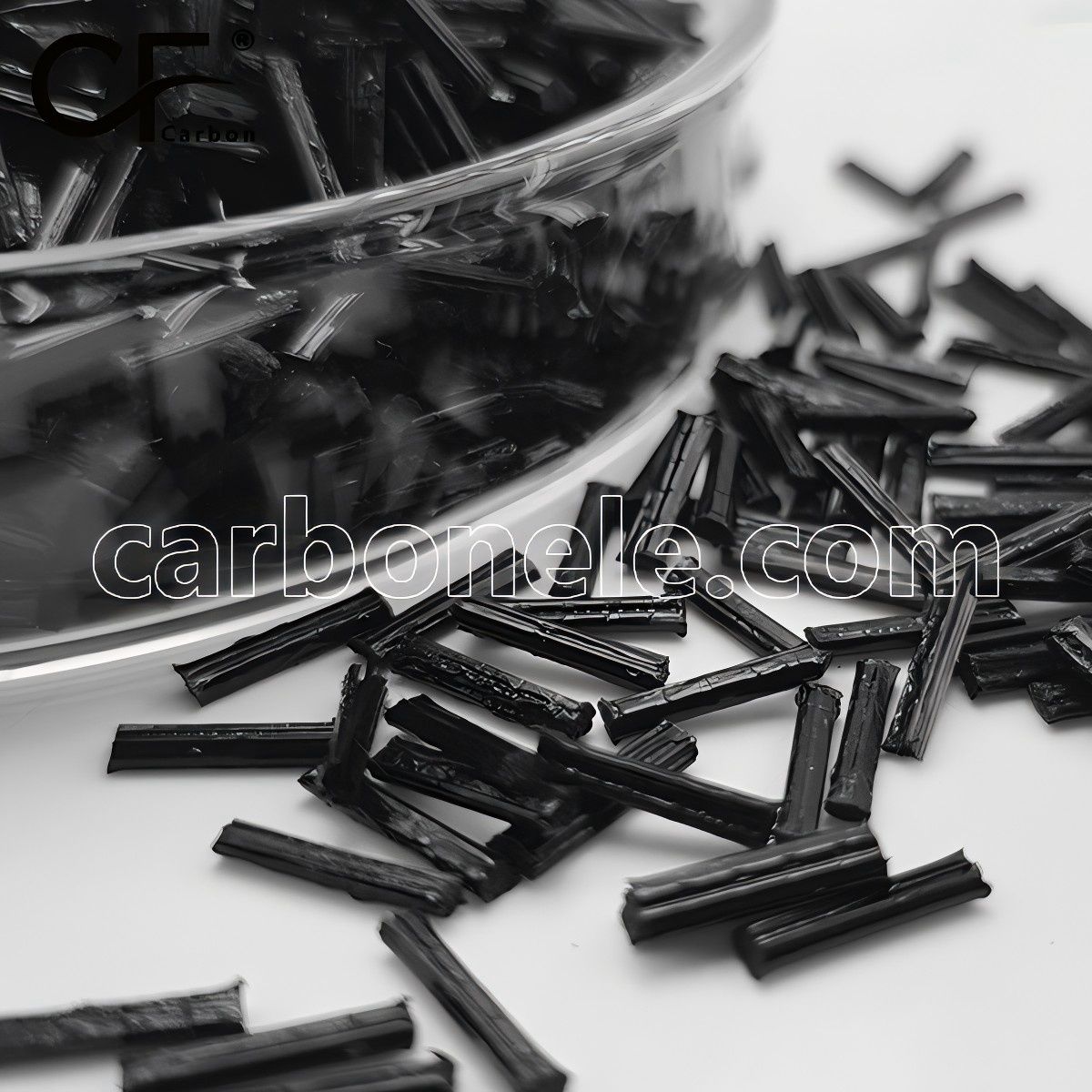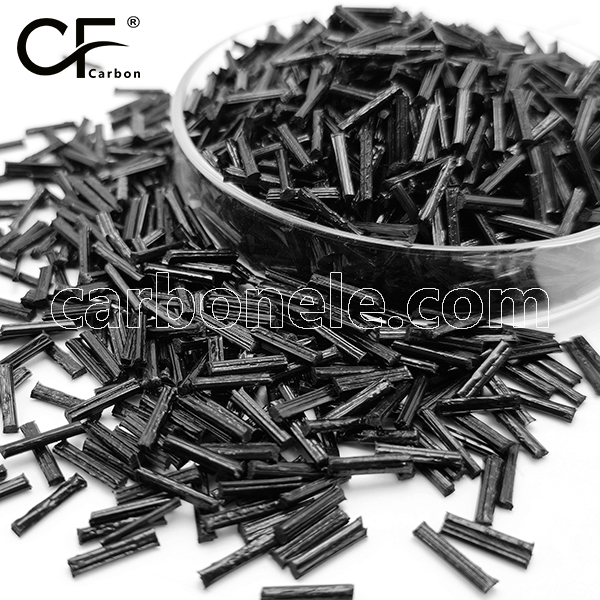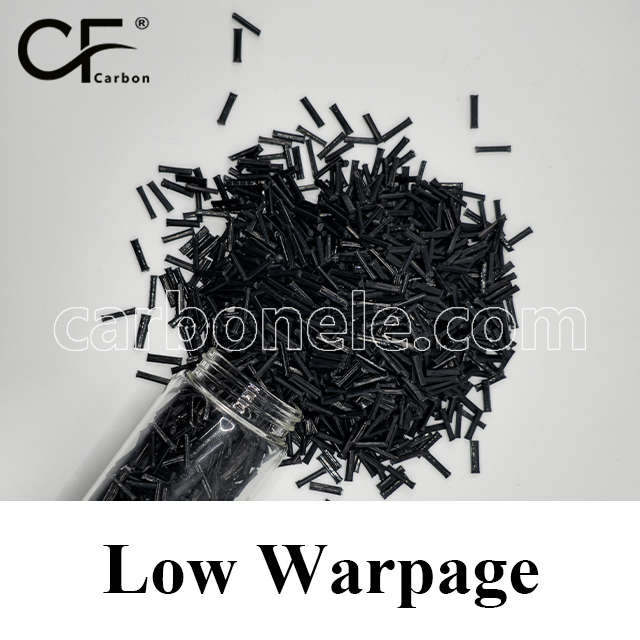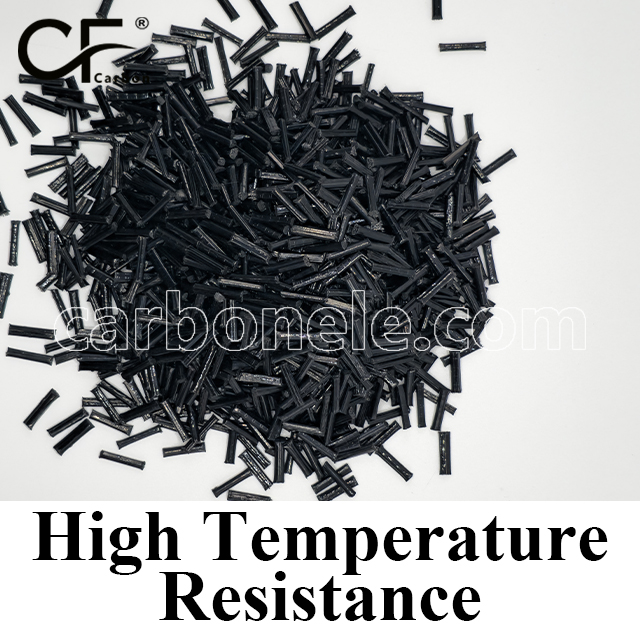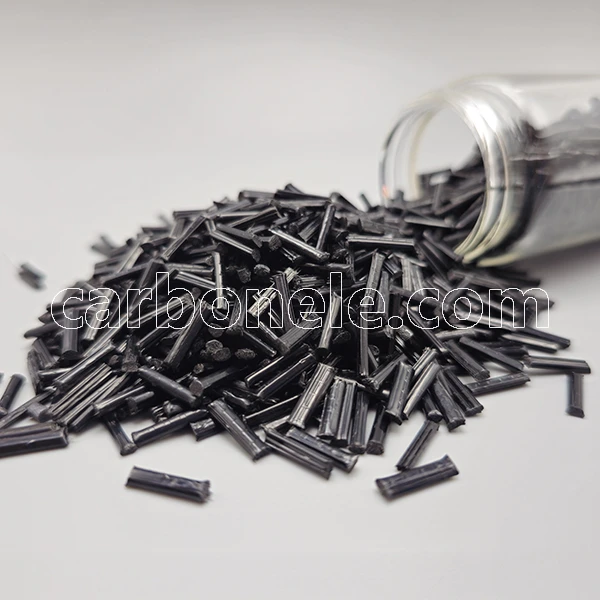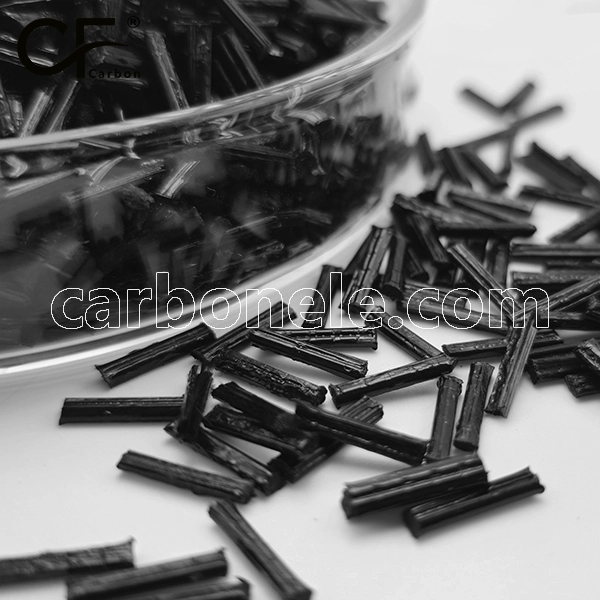The friction coefficient of PPA-CF is typically lower than that of standard PPA, as its carbon fiber reinforcement provides better lubrication, reducing friction and wear, and enhancing performance under high friction conditions.

Superior PPA-LCF20 for High-Stress Links & Frames
Superior PPA-LCF20 long carbon fiber reinforced polymer. Engineered for high-stress links, frames, & robotic arms. Achieve metal-like strength with lightweight durability. Request a quote for your project.
- Model number: PPA-LCF-BCA2
- Matrix Resin: Personal Package Archive (PPA)
- Reinforcing Filler: Carbon fiber
- Appearance: Granules
- Grade: Injection/extrusion grade
- Packaging: 25kgs/bag
Superior PPA-LCF20: The Definitive Choice For High-Stress Links And Frames
In the relentless pursuit of engineering excellence, the selection of material is paramount.
When failure is not an option and performance under extreme conditions is a baseline requirement, conventional materials reach their limits. This is where PPA-LCF20 enters the equation.
This advanced long carbon fiber reinforced polyphthalamide is not merely a material; it is a strategic solution designed to redefine the boundaries of lightweight strength and durability.
For engineers and designers tackling the most demanding applications, particularly in the realm of high-stress links and frames, PPA-LCF20 provides an unparalleled advantage, offering a superior combination of mechanical properties that reliably replaces metal in countless challenging environments.
What Is PPA-LCF20?
PPA-LCF20 represents a significant advancement in the world of high-performance engineering thermoplastics.
The name itself reveals its sophisticated composition: Polyphthalamide (PPA) reinforced with Long Carbon Fiber (LCF).
This specific combination is crucial. The polyphthalamide base resin is renowned for its robust performance at elevated temperatures and its excellent resistance to various chemicals.
By integrating long strand carbon fibers into this already superior matrix, PPA-LCF20 achieves a fundamental leap in structural integrity.
The long fibers create a continuous reinforcing network throughout the composite, much like the steel rebar within a concrete structure, distributing stress evenly and dramatically enhancing the overall performance characteristics of the material.
This synergy between the high-temperature capable polymer and the high-strength fiber creates a composite material that is engineered for success in severe conditions.
Key Characteristics And Benefits Of PPA-LCF20
The exceptional profile of PPA-LCF20 is defined by a suite of interconnected properties that make it ideal for critical components.
Exceptional Mechanical Strength And Stiffness
The primary benefit of the long carbon fiber reinforcement in PPA-LCF20 is its extraordinary mechanical performance.
The material exhibits remarkable tensile strength and outstanding stiffness, allowing it to withstand significant static and dynamic loads without deformation or failure.
This inherent rigidity ensures that components manufactured from PPA-LCF20 maintain their precise geometry and functional integrity even when subjected to continuous high stress, making it an ideal candidate for structural applications.
Outstanding Resistance To Fatigue And Creep
Components like links and frames are often under constant load for extended periods. PPA-LCF20 demonstrates superior resistance to creep, the tendency of a material to slowly deform under a persistent mechanical stress.
Furthermore, it offers excellent fatigue resistance, meaning it can endure a high number of loading and unloading cycles without developing cracks or weakening. This long-term durability is a critical factor for applications where reliability and service life are non-negotiable.
Remarkable Thermal And Chemical Stability
The polyphthalamide base of PPA-LCF20 grants it impressive thermal capabilities. The material maintains its properties across a wide temperature range, performing consistently in environments that would cause other plastics to soften, warp, or degrade.
Complementing its thermal stability is a strong resistance to a broad spectrum of chemicals, including oils, greases, and various fluids commonly encountered in industrial and automotive settings.
This stability ensures that PPA-LCF20 components will not succumb to their operational environment.
Significant Weight Reduction Without Compromise
Perhaps one of the most compelling advantages of PPA-LCF20 is its ability to deliver metal-like performance at a fraction of the weight.
This weight reduction is a critical driver for industries focused on improving efficiency, such as automotive and aerospace, where lowering mass directly translates to enhanced fuel economy, increased payload capacity, and higher overall performance.
Switching to PPA-LCF20 from a traditional metal allows for lightweighting initiatives without sacrificing the strength or durability required for the application.
A Deep Dive Into The Application: High-Stress Robotic Linkage Arms
To fully appreciate the capabilities of PPA-LCF20, it is essential to examine a concrete application where its properties are not just beneficial, but essential.
Consider the high-stress links and frames within an industrial robotic automation system, specifically the linkage arms in a high-speed pick-and-place or welding robot.
These robotic arms are the workhorses of modern manufacturing. They operate with extreme speed and precision, executing repetitive motions thousands of times per hour.
Each movement subjects the linkage arms to immense inertial forces, sharp acceleration and deceleration, and constant vibrational stresses. The operational environment might also be warm due to proximity to motors and other machinery.
A linkage arm made from a less advanced material would be prone to several failure modes. It might flex under load, compromising the robot’s pinpoint accuracy. Over time, the constant stress could lead to fatigue failure, resulting in catastrophic breakdown and costly production downtime.
Furthermore, a heavy metal arm requires more powerful (and more expensive) motors and drives to achieve the same acceleration, increasing energy consumption and reducing overall system efficiency.
This is precisely where PPA-LCF20 becomes a transformative material solution. A robotic linkage arm engineered from PPA-LCF20 directly addresses all these challenges:
Unwavering Stiffness: The exceptional rigidity of PPA-LCF20 ensures the arm does not bend or flex during operation, maintaining the robot’s critical precision and accuracy throughout its duty cycle.
Long-Term Durability: The superb fatigue and creep resistance of PPA-LCF20 means the linkage arm can withstand millions of operational cycles without any loss of performance or integrity, dramatically extending service life and reducing maintenance needs.
Lightweight Performance: The significant weight reduction achieved with PPA-LCF20 allows the robotic system to operate faster and more efficiently, accelerating cycle times, lowering energy consumption, and reducing the load on motors and actuators.
Reliable Operation: The inherent thermal stability of PPA-LCF20 guarantees consistent performance even as the temperature in the factory fluctuates or heat builds up within the robot itself.
By enabling lighter, stronger, and more durable robotic components, it directly contributes to enhanced productivity, reduced operating costs, and superior manufacturing reliability.
This example underscores how the strategic application of PPA-LCF20 for high-stress links and frames solves complex engineering problems.
PPA-LCF20 Versus Traditional Materials
Understanding the value of PPA-LCF20 requires a comparison to conventional material choices.
Versus Metals (Aluminum, Steel)
While metals like aluminum and steel have been the traditional go-to for structural frames and links, they come with significant drawbacks: excessive weight, susceptibility to corrosion, and often require complex, costly machining and secondary operations.
It offers comparable strength with dramatically lower mass, inherent corrosion resistance, and the design freedom of net-shape injection molding, which consolidates multiple parts into one complex geometry.
Versus Short-Fiber Reinforced Plastics
Short-fiber reinforced plastics are an improvement over unreinforced resins but fall short of the performance offered by PPA-LCF20.
The long fibers in PPA-LCF20 provide far superior impact resistance, higher tensile strength, and greatly enhanced stiffness.
For a critical component like a linkage arm, the isotropic properties and structural integrity provided by PPA-LCF20 are essential, whereas short-fiber materials can exhibit anisotropic behavior and are more prone to failure under high stress.
Design And Manufacturing Considerations For PPA-LCF20
Successfully implementing PPA-LCF20 requires attention to design and processing details.
Design For Manufacturing (DFM)
Designing for PPA-LCF20 involves optimizing part geometry to maximize the benefits of fiber orientation.
Features like ribs and gussets can be incorporated to enhance stiffness further. It is also crucial to consider gate locations and flow paths to ensure proper fiber alignment that aligns with the primary stress directions in the part, such as along the length of a structural link.
Injection Molding Process
PPA-LCF20 is processed using standard injection molding techniques, making it accessible for high-volume production. However, to preserve the length of the carbon fibers and thus the mechanical properties, specific processing parameters are recommended.
Experienced molders can achieve excellent results, producing high-performance components with consistency and efficiency. The ability to mold complex, integrated shapes often eliminates assembly steps and reduces the total number of parts in a assembly.
Why Choose Our PPA-LCF20?
Our commitment to quality and consistency sets our PPA-LCF20 material apart. We utilize a controlled manufacturing process to ensure every batch delivers the same exceptional performance, lot after lot.
Our technical support team is ready to assist you with design consultation, material selection guidance, and processing recommendations to ensure your project’s success from concept to production.
Unlock Your Design Potential With PPA-LCF20
The challenge of designing high-stress links and frames demands a material that is equal to the task.
PPA-LCF20 provides the solution, offering a powerful combination of strength, stiffness, durability, and lightweight performance that is unmatched by conventional materials.
It is the key to unlocking new levels of efficiency, reliability, and innovation in your most demanding applications.
Take The Next Step: Contact Us Today
Are you ready to explore how PPA-LCF20 can transform your next design? We invite you to connect with our team of materials experts.
Contact us today to discuss your specific application requirements, request a quote, or to learn more about the transformative potential of PPA-LCF20 for your high-performance components. Let us help you build a stronger, lighter, and more efficient future.
If you want to get more information about PPA-LCF50, you can visit our YouTube.
Strength between PPA and PPA-CF
PPA-CF (carbon fiber reinforced) offers significantly higher mechanical strength and rigidity compared to standard PPA. The addition of carbon fiber enhances tensile strength, flexural strength, and wear resistance, making PPA-CF more suitable for heavy loads and extreme environments. While standard PPA is suitable for medium-load and conventional applications, PPA-CF provides superior performance for more demanding industrial conditions.

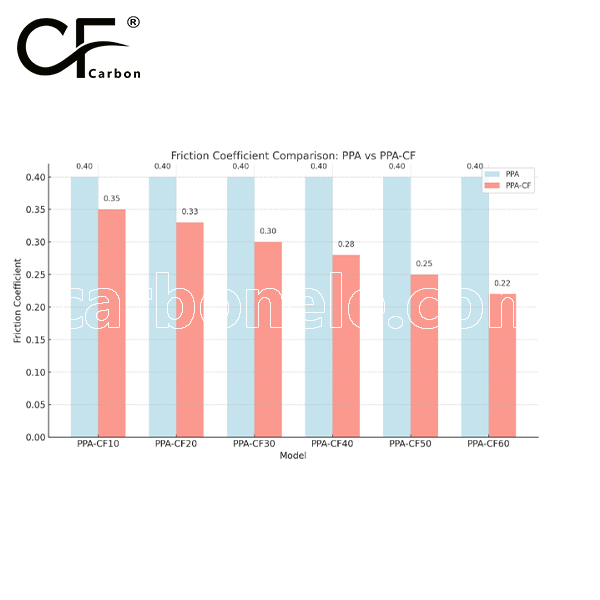

Frequently Asked Questions
Carbon (Xiamen) New Material Co., Ltd. aims to provide buyers with "one-stop" worry-free high-quality services. Here you can find all information about carbon fiber engineering plastics. If you still have questions, please send us an email for consultation!
-
How can I contact the manufacturer of a product that interests me?
When you find a product you are interested in, you can contact the manufacturer directly by sending an email and we will get back to you as soon as possible.
-
How do I find the products that interest me?
All you need to do is enter the keyword, product name in the search window and press the Enter key on your keyboard. Your search results page will then be displayed. You can also search within the product category pages on the home page. Each category is divided into subcategories, allowing you to refine your search and find products that interest you.
-
Where will I find a buying guide?
Please contact our after-sales service directly and we will provide you with a comprehensive operating guide.
-
What are CF Reinforced Thermoplastic Composites?
CF Reinforced Thermoplastic Composites are materials where carbon fibers are incorporated into a thermoplastic matrix. They combine the strength and stiffness of carbon fibers with the processability and recyclability of thermoplastics. For instance, they are used in automotive parts like bumper beams.
-
What are the benefits of CF Reinforced Thermoplastic Composites over traditional composites?
The key benefits include faster production cycles, easier recyclability, and better impact resistance. They also offer design flexibility. An example is in the manufacturing of consumer electronics casings where complex shapes can be achieved more easily.
-
How are CF Reinforced Thermoplastic Composites processed?
Common processing methods include injection molding, extrusion, and compression molding. Injection molding is widely used for mass production. For example, in the production of small components for the medical industry.
-
What industries use CF Reinforced Thermoplastic Composites?
They are utilized in aerospace, automotive, medical, and sports equipment industries. In aerospace, they can be found in interior components. In the medical field, they might be used in prosthetics.
-
How does the carbon fiber content affect the properties of the composites?
Higher carbon fiber content generally leads to increased strength and stiffness but may reduce ductility. A moderate content is often balanced for specific applications. For example, a higher content might be preferred in structural parts of a race car.
-
What are the challenges in using CF Reinforced Thermoplastic Composites?
Challenges include higher material costs, complex processing equipment requirements, and ensuring uniform fiber dispersion. Issues with adhesion between the fibers and the matrix can also arise. An example is in achieving consistent quality in large-scale production.







